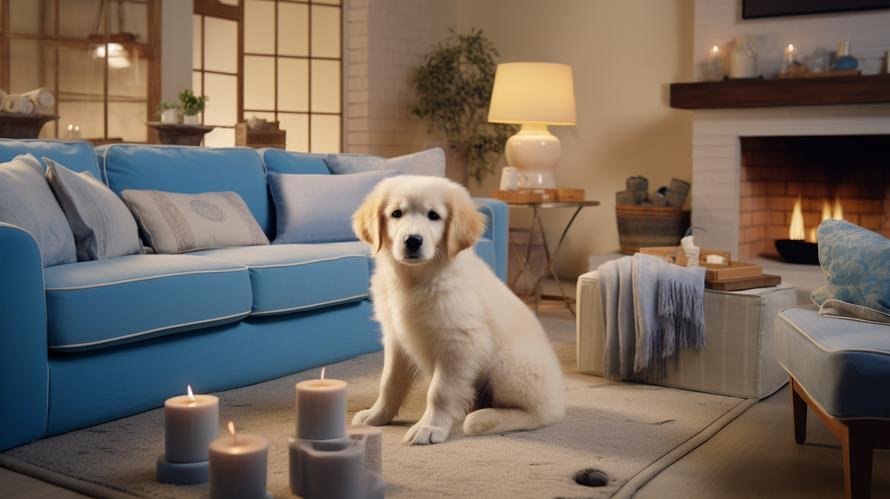When a new furry, four-legged family member hopping around the house is a truly joyful sight. But while puppies are undoubtedly adorable, they come with an equally undeniable need for constant care – particularly when it comes to house training. It can be a daunting task for new puppy parents to figure out how to effectively use puppy pads and more importantly, how many should be put down.
But what if I told you there’s an art to it? A calculated approach that’s going to save you time, effort, stress, and quite possibly, your favorite rug. With a little preparation and inclination to understand your pup’s needs and habits, you could make puppy potty training an enjoyable bonding experience for both of you. Let’s dive into these splashes of wisdom you perhaps never knew existed.
The first thing to understand is that your household needs to be adequately prepared for the arrival of your new furry friend. Acquainting your pup with his or her new home should involve careful selection of potty spots, which should be equipped with puppy pads. This brings us to the million-dollar question, how many puppy pads to lay down?
The number of puppy pads needed depends on a variety of factors, such as the size of the puppy, their breed, age, and health. For a young healthy puppy, generally weighing under 15 pounds, one pad per potty event should suffice. In contrast, larger dogs or those with certain health issues might require two or more pads.
However, the rule of thumb for new pup parents should always be ‘the more, the merrier,’ at least initially. Puppies tend to miss the target often in their initial training days. As a result, it may be crucial to lay pads covering a larger area in the selected potty spot. This strategy ensures a clean and hygienic environment while saving your precious floors and carpets from the damage.
Your puppy’s feeding schedule has a direct impact on their ‘potty schedule’. Normally, a puppy will need to go outside to relieve themselves within 15-30 minutes after eating. Therefore, mapping out your puppy’s meal-times can give you a sense of how many pads you’ll need each day. Consider how many times your puppy eats, how soon afterward they need to go, and how many puppy pads this equates to.
Observation is key in nap calculations. Puppies, like infants, tend to relieve themselves once they wake up. Observe your puppy’s habits and ensure that there is always a fresh pad ready when they wake up from their nap. If your pup is highly active and plays around a lot, it may need more pads as such pups tend to drink more water and consequently, urinate more.
The breed of your pup also plays a significant role in determining the number of pads you’ll need. Small breed puppies, like Chihuahuas or Pomeranians, have a smaller bladder and need to relieve themselves more often, hence requiring more pads. On the other hand, larger breed puppies, like Labradors or German Shepherds, have a comparatively larger bladder, thus need to urinate less frequently.
Apart from these factors, the number of puppy pads also depends on the pup’s age and training stages. For a newbie in housetraining, using more pads, approximately 4-6 covering a confined area, would make sense. However, as your puppy grows and gets more comfortable with the concept, you can reduce the number of pads to just one or two per session.
The quality of the puppy pads you use also matters. Higher quality pads are more absorbent and can often be used more than once depending on the puppy’s size. They are great for overnight usage or when you are going to be away for a while and can also reduce the number of pads required in a day.
While puppy pads are a great tool for house training, we must bear in mind the ultimate goal is to teach our puppy to go outside. Gradually moving the puppy pads closer to the door and reducing their number can signal to your puppy that it’s time to transition to going outside. Please remember, patience is the key here.
And with patience, strategy, and lots love and positive reinforcements, you’ll find that your adorable furball isn’t just your loyal companion but a housetrained one at that. Like most aspects with introducing a puppy into your home, there’s no one-size-fits-all answer to how many puppy pads you should put down. But with a good understanding of your pup’s habits, size, and breed characteristics, you can make an informed decision that will lead to a hassle-free puppy parenthood.
So, hang in there, dear puppy parents, as you juggle through the puppy pads and poop, because trust me, the look in your puppy’s eyes when they get it right is an absolute treat.
Remember: a well-trained pup equals a happy pup parent!
And that, dear pet lovers, is your crash course in Puppy Pad Mathematics. Best of luck to you and your new furry family members!



